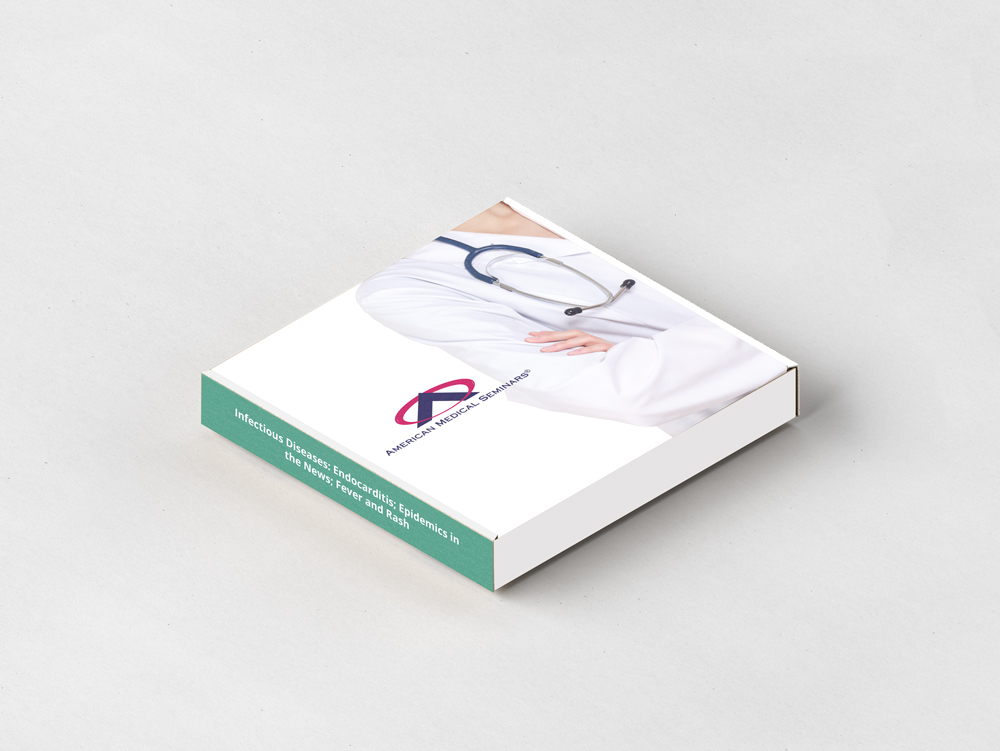Product Description
Title: Emergency Medicine – Infectious Diseases: Endocarditis and Orthopedic Device Infection; Epidemics in the News; Fever and Rash
Faculty: Kenneth Kaye, M.D., F.A.C.P., Stephen J. Gluckman, M.D., F.A.C.P., F.I.D.S.A, Valerianna Amorosa, M.D.
Original Release Date: July 1, 2019 Expiration Date: July 1, 2022
TOPIC 1: Endocarditis and Orthopedic Device Infection Prophylaxis Guidelines: What the PCP Needs to Know.
Upon completion of this session, using evidence- based guidelines from the AHA, ADA, AAOS and AUA, the participant should be able to: EBM, GL, COMP
- Apply current recommendations for antibiotic prophylaxis of endocarditis and prosthetic joints.
- Illustrate data supporting prophylaxis.
- Determine appropriate patients for prophylaxis.
- Use proper administration of prophylactic antibiotics, including prophylaxis in the allergic patient.
TOPIC 2: Epidemics in the News.
Upon the completion of this session, the participant should be able to relate the following about each of these four presently active viral epidemics: GL, EBM, COMP
Ebola Zaire;
MERS-CoV;
Chikungunya;
Pertussis;
Measles;
Zika;
- Appraise how the transmission mechanisms and risk of infection has impacted the incidence of these viruses in the U.S.
- Recognize and determine, through appropriate WHO and CDC resources, the geographic distribution of each viral illness.
- Determine the various presentations and differentiate the clinical syndromes from other common infectious processes in patients presenting to a primary care practice.
- Determine the features and predictors to formulate an approach to each illness that will help guide your diagnostic testing decisions for making an appropriate diagnosis as per the current CDC and WHO Guidelines.
- Assess the risk to health care workers and other patients while determining public health implications in an effort to deploy appropriate resources and methods of Infection control as per the CDC and WHO recommendations and Guidelines.
TOPIC 3: Approach to the Patient with Fever and Rash.
Upon completion of this session, the participant should be able to: COMP
- Describe the etiology of commonly seen infectious and non-infectious rashes that are associated with fever.
- Develop a differential diagnosis based upon the type of rash on presentation.
- Recognize the scenarios in which emergent treatment of fever/rash are warranted
- The receipt for any incentive-associated purchase will designate the value of the gift card separately from the cost of the learning activity.
- This incentive may have implications on your tax reporting obligations. Any reimbursed amount must be declared as personal income for tax purposes.


